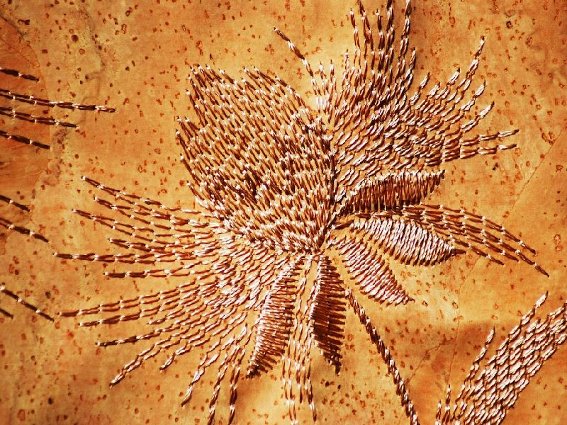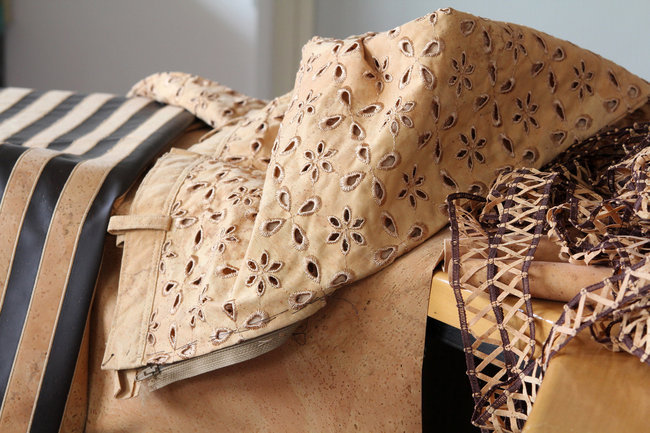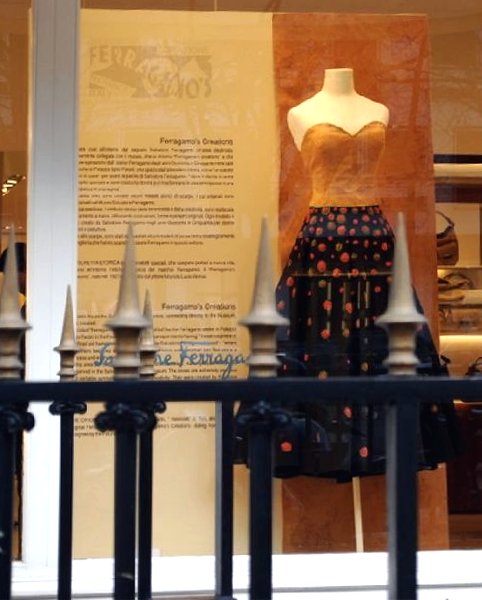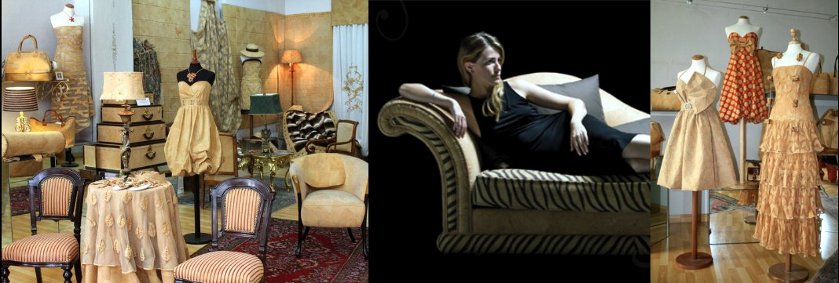
Many a material is said to be unusuable for fashion.
Then, when it is proven that it can be used for the high street, and when small designers have started using it – say, for example, organic wild peace silk, or even GOTS certified silk – one last barrier remains: the luxury high end of products, be it fashion or interiors.
Sustainable silk varieties are struggling with this aspect of things. Whether or not this is justified won’t be part of this article, but certainly gives enough material for plenty of discussion, and some insights about personal conviction of designers as opposed to what the market needs and is willing to accept.
Cork finds itself still in a much earlier stage of this development. Paradoxically however, the technical problems have in reality though already been solved, and there in fact is cork material available that is eco-sustainably produced and fits with the expectations that fashion designers have.
Not only that: the production process is so versatile, that a fabric for a bridal dress can be produced as much as the upholstery for a luxury yacht or a range of ‘leather’ furniture for a VIPs of this world.

Behind this development there is the name of a single women: Anna Grindi, a coveted dress maker from Tempio Pausania, a town in northern Sardinia. The island is home some of the largest cork forest in Europe. For Grindi, the development is more than her personal merit, but the result of her ongoing obsession with cork as material.
Over the course of some 10 years she experimented in her kitchen, looking for ingredients and processes that would turn the cork into something that complied with the requirements she had as a high-end dress maker for the very rich and well off. And she managed.
Today, her process is patented internationally, and the fabrics tested in Austria for their quality, but also to dispel any allegations of non-permitted chemicals used.

Anna presented the first cork fabric of her own production in the shape of the wedding dress for her daughter.
And today, her company Suberis produces 2 different types of fabrics, each of a different weight:
- Suberis 175
– made from 50:50 cork-cotton mix (pure cork with pure cotton)
– sheets of 140cm length
– 0.4mm thick,
– weighing 193 grams per meter. - Suberis 400
– made from 100% cork
– comes in sheets of 140cm length
– 0.6mm thick
– weighing 298grams per meter.
Beyond fabrics, Suberi produces cork-based wall papers, a wide range of fashion accessories such as bags and shoes, a fashion collection, and luggage among others.
Most recently, Anna Grindi and Suberi have managed to even create a yarn from a 50:50 cork-wool mix. A creation that leverages the synergies of the 2 most common raw materials that exist on Sardinia.
Read more about Anna Grindi and her story in English this 2011 New York Times article.

Video: Hear about her story from Anna Grindi herself (in Italian).

